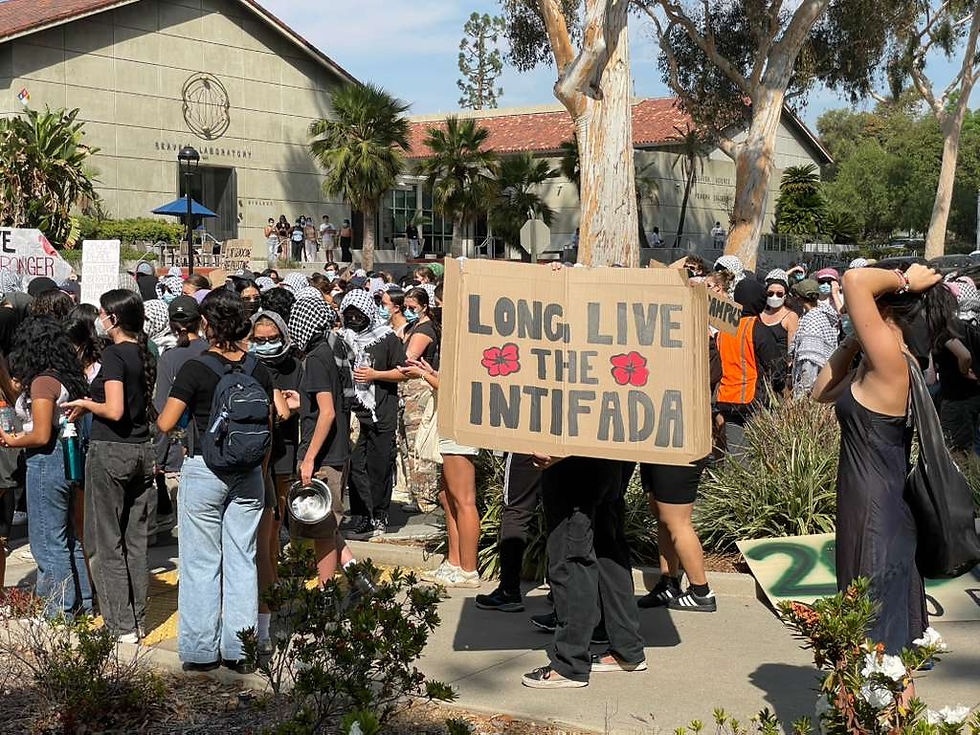Initiation in Moderation
- The Claremont Independent

- Nov 10, 2013
- 3 min read
Nowadays, everyone in the nation knows about varsity sports and their reported propensity for activities that fall under the banner of “hazing.” News stories, movies, and TV shows portray American varsity sport teams as quasi-fraternities, where rookies die from alcohol poisoning and are forced to perform disturbing acts under threat of physical violence. The Claremont Colleges, thankfully, have not seen any such horror story occur in the recent years. This does not mean, though, that many initiation rituals cannot end in emotional, physical, or mental harm.
With that end in mind, CMS Athletics has taken a very strong stance against any action that could be termed as “hazing.” I recently attended a team meeting where Athletics Director Mike Sutton explained the CMS policy regarding initiation and hazing. He explained that any activity, no matter how seemingly mundane or harmless, that singled out one group of athletes from the rest of the team could be defined as hazing. Furthermore, Sutton said that it did not matter if freshmen (or any group/individual) agreed from their own volition to participate in these activities, because they were being, effectively, coerced into participating through strong social pressures.
Under this framework, any activity that could fit under the definition of initiation is forbidden. Even a simple party where freshman were “welcomed” to the team and participate in voluntary drinking with the rest of their teammates could be defined as hazing. Under-age drinking rules aside, CMS would argue that the freshmen involved had been coerced into drinking with their teammates (even if they were not “coerced” into participating in any activity that singled them out as a group). These rules, therefore, place huge limitations on any sort of team-bonding activity, not just initiations. Essentially, the only acceptable alternative of a team-bonding activity would be an activity like watching a movie together (without alcohol, of course).
This seems to go contrary to CMS’ belief in promoting a strong team culture because it so strongly limits the types of activities they can participate in together. This is not to say athletes can only socialize in an alcohol-fueled setting; it just means that, for example, even if an entire team is going to a registered party together on Saturday, they cannot drink together beforehand. Let’s not kid ourselves that this sort of rule will stop under-age athletes from drinking on their own, or be “coerced” into drinking with non-athlete friends. What it will result in, though, is the degradation of the team’s spirit, since every athlete will be forced to socialize only with their non-athlete friends every night that they go out.
CMS’ definition of hazing goes above and beyond the actual legal definition of hazing. According to USLegal.com, the legal definition of hazing is “an abusive, often humiliating form of initiation into or affiliation with a group.” This includes “any willful action taken or situation created which recklessly or intentionally endangers the mental or physical health of another” or “any action by any person alone or acting with others in striking, beating, bruising, or maiming… or attempt to do physical violence to another made for the purpose of committing any of the acts.” The term hazing, however, does not “include customary athletic events or similar contests… and is limited to those actions taken and situations created in connection with initiation into or affiliation with any organization.” This definition is much smaller in scope than CMS’, as it only covers activities that were performed under physical threat, instead of the threat of “not fitting in.”
It is curious that CMS has taken such an extreme stance on this issue, especially since the legal definition is so much more limited than their own. While I certainly did not experience any sort of hazing, even under CMS’ definition, as a freshman, I do understand that each team has a different tradition with regards to welcoming their rookies to the group. Therefore, I hope that the increased dialogue and focus on discouraging harmful activities by the Athletic Department prevents any future Stagthena from experiencing any mental, emotional, or physical pain. However, I do not believe that CMS should so harshly shackle the wonderful team spirit that pervades each sport in pursuit of this goal. Consequently, going forward, it would be helpful if CMS reworded their policy to allow athletes to socialize together as friends without fear of punitive action. This would allow athletes to maintain that great CMS spirit while working to prevent hazing from occurring within each team.
[Related: “The Problem with Initiation“]
.png)



Comments